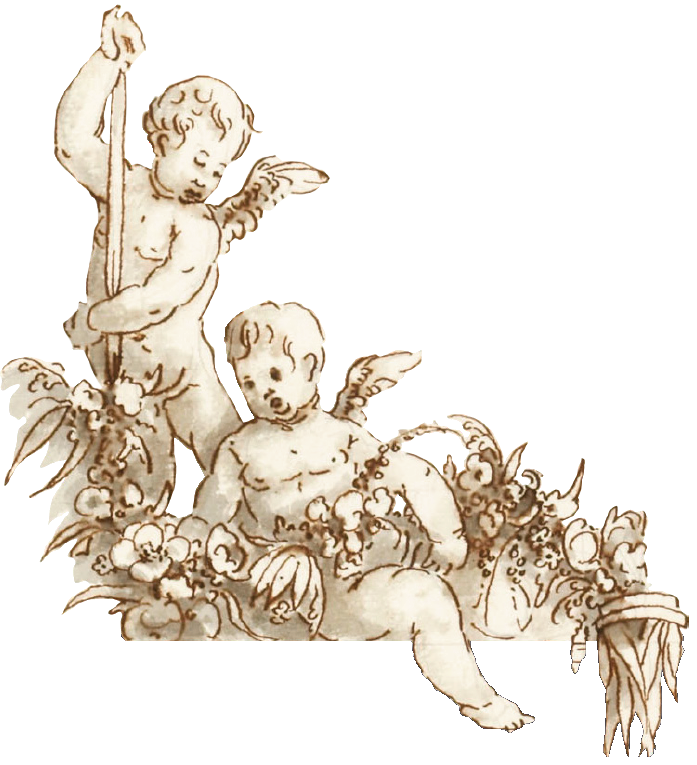Design for Chimney-Piece with Gilt Panel
Creator(s): Grinling Gibbons 1648-1721
Date: Undated, but probably near beginning of period c. 1689-94
Accession Number: SM 110/37
Dimensions: 460mm x 290mm
Materials: Pen and brown ink over graphite under drawing with grey washes and some additions in graphite; on laid paper
Location: Sir John Soane's Museum
Credit Line (copyright notice for material) : © Sir John Soane's Museum
Online Catalogue Entry : http://collections.soane.org/OBJECT272

NOTES ON THE ARTWORK
Design for a chimney-piece with a gilt panel. Like 110/38 [Design for Chimney-Piece with Deep Mantel Frieze on this website], this drawing has yellow wash in addition to the predominant grey washes. The yellow wash probably indicates gilded surfaces, for it is used for the two carved mouldings of the fire surround cornice and for the moulded frame of the overmantel panel. The framed panel within the fire surround has a yellow background, suggesting gilded wood, and on this is a large symmetrical composition of a two-sided eagle’s wing, backed by three trumpets and with a ribbon framing a WM monogram. The composition is intended as a relief carving as some cast shadows are indicated. The theme is of victory, but it is not carried up into the overmantel, where a blank frame is surrounded by fruit, flowers, drapery and birds, and the decorative elements are smaller in scale.
Gibbons has drawn a trial of the WM insignia in brush and yellow wash on the drapery swag beneath the overmantel panel. This suggests and unfamiliarity with the motif, and may be another indicator of an early date for this group of drawings.
The decorative relief elements of the overmantel are rendered very flat in pen and wash, like all the relief carving in this group of five. There is spatial ambiguity in the relief composition. On the left side a drop of flowers is drawn against the side of the overmantel, without any overlap, but at the bottom one of the swags is made to lie across the mantel shelf and overhang the corner. Throughout it is not clear how deep the carving will be, or which features will stand forward of others. This is largely the result of an absence of clearly drawn cast shadow.
The base of the drawing is the bottom of the sheet, but the drawing was probably trimmed back to this line, for on 110/38 the bottom of the sheet has been extended by the later addition of a narrow strip, presumably to repair damage to the original paper below the baseline.
Literature: Wren Society, vol. IV, pl. 32, top.
Digitisation of the Drawings Collection has been made possible through the generosity of the Leon Levy Foundation.
If you have any further information about this object, please contact: drawings@soane.org.uk


